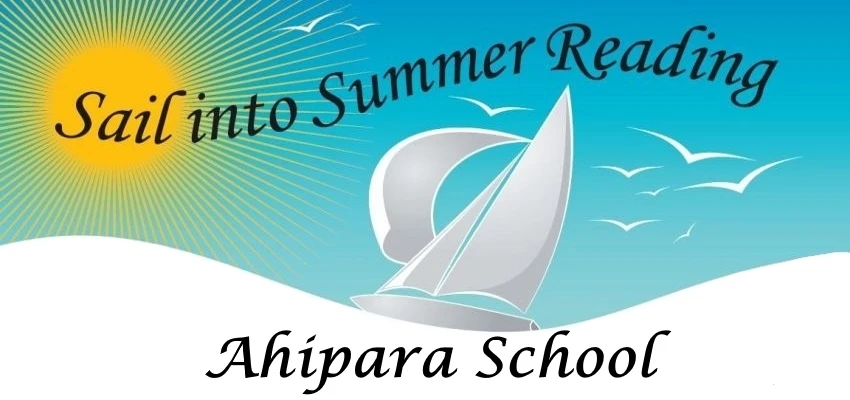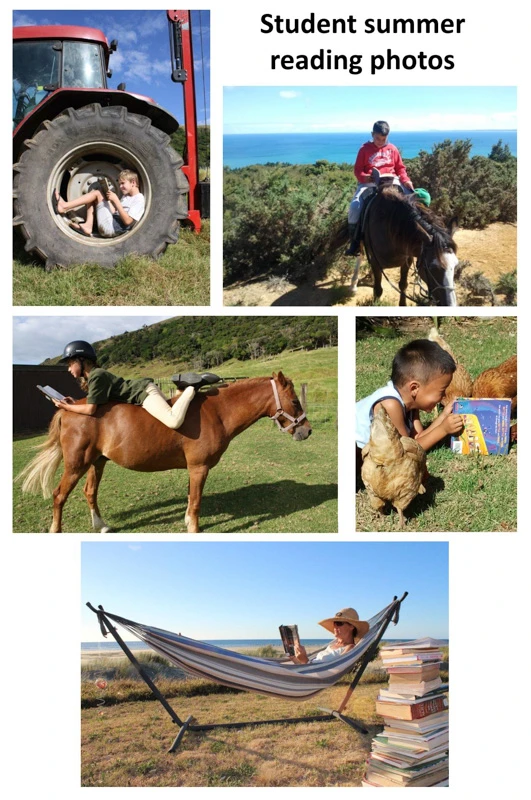Summer reading at Ahipara School

Read how Ahipara School, a rural Northland school, increased summer reading by using a whole-school approach that included a photo competition, displays, and visits to the public library.
Introducing Ahipara School
Ahipara School is a rural school, in the coastal settlement of Ahipara, 14km west of Kaitaia in the Far North, at the southern end of Te Oneroa-a-Tohe, 90 Mile Beach. It is a year 1–8, decile 3 school, with 190 students, 70% Māori.
Importance of summer reading
We have been aware of the importance of children continuing to read in the holidays for a long time. Teachers have developed various initiatives over the last few years, such as a 'take-home pack' with resources and readers etc, and we have created a pamphlet for whānau about holiday reading, which is at our office front desk available all year round.
In 2012, we took a whole-school approach to try to get as many children reading over the summer as we could, and to let parents know why it made a difference. We really focused on making reading fun, keeping it easy, and that reading is for everyone.
Staff professional development and discussion
In term 3, 2012 all of our staff attended the National Library’s Sail into Summer Reading workshop in Kaitaia as a staff meeting. Together, we developed a plan for our school.
For the end of term 3 holidays, I created a collection of books from our library for each teacher. This is so that they can become aware of literature in our library and then be able to recommend books to their students and to other teachers and students.
Teachers also signed up for the National Library’s summer reading books.
Classroom practice
I adapted some resources from our National Library Adviser and the National Library’s web page and gave them to all teachers. These gave them ideas for engaging students with summer reading. We also went over them at a staff meeting and talked about what different teachers were doing to prepare students for the holidays including making sure they all have access to books and to a list of books they are keen to read.
Children made a list of their 10 favourite books. They then shared this with their buddies, then created a 'top 10' list of class favourites that were displayed in the library. The teachers would read snippets from a range of books to their classes to expose children to new books that might interest them.
Informing the parents and liaising with the public library
We put notices in our school newsletters to let whānau know the importance of summer reading, how they could help and encourage their child to read.
We reminded them that the public library is free for children to join. In December 2011, we took 4 junior classes to the public library and many whānau came along and joined up on this day — for some of them it was the first time they’d been in the new Te Ahu Library.
Getting the children on board
We put up a display in the library for children to promote summer reading. We gave ideas of what to read including books, magazines, emails, comics etc.
We saved up the Duffy books from the term and gave them out to students, just before the end of the school year so that they had some new books to read over the summer.
Children had a simple reading log in which to record some reading time each day. Children who read 20 nights or more in the holidays got a reward of a free swim while others were in class. They also got a juicy to eat and a balloon.
We had a summer reading photo competition — 'Take a photo of someone reading in an interesting place'. This helps the children to realise that they can read anywhere! This was successful, with many entertaining entries, and it is something we will continue with.
We also opened our school library during the holidays so children could come in and change their books. The school library is close to the swimming pool so visitors to the pool often also came into the library.
We now do similar things over each of the school holidays to encourage children to maintain their reading mileage.
Results
Over the years, we have had a steady increase of children reading during the holidays.
After the 2011 summer holiday, there were approximately 10 children who read during the holidays and recorded it.
Over the 2012 summer holidays, there were 26 children who read over 20 days in the holidays.
After the holidays at the end of term 1 2013, we had 51 children who read for at least 10 days in the holidays. This was a huge improvement and hopefully, as children and whānau become more aware of the importance of holiday reading, this trend will continue.
Our display board and competition photos


Report author
Petrina Yuretich — Deputy Principal and Teacher with Library Responsibility.